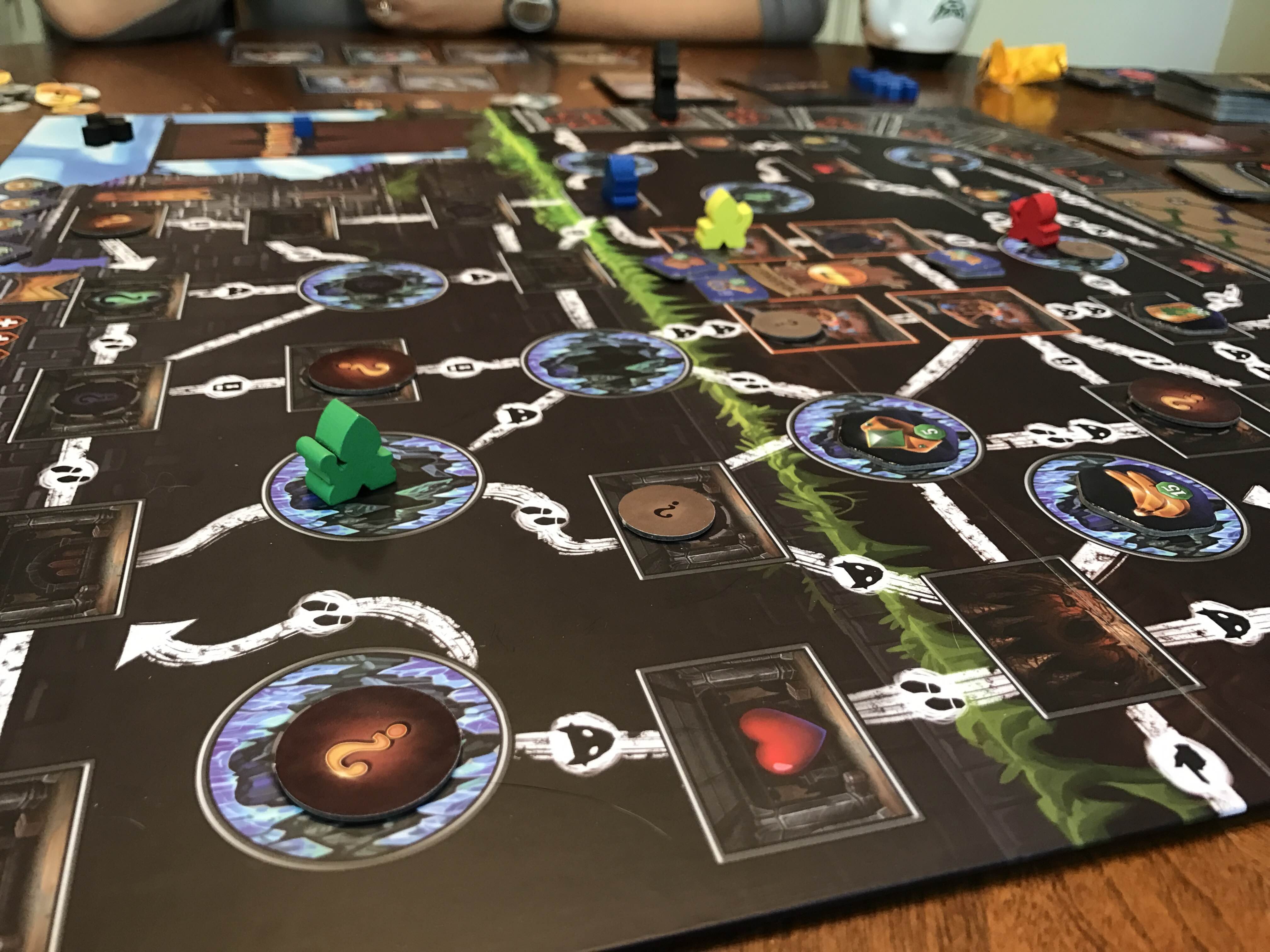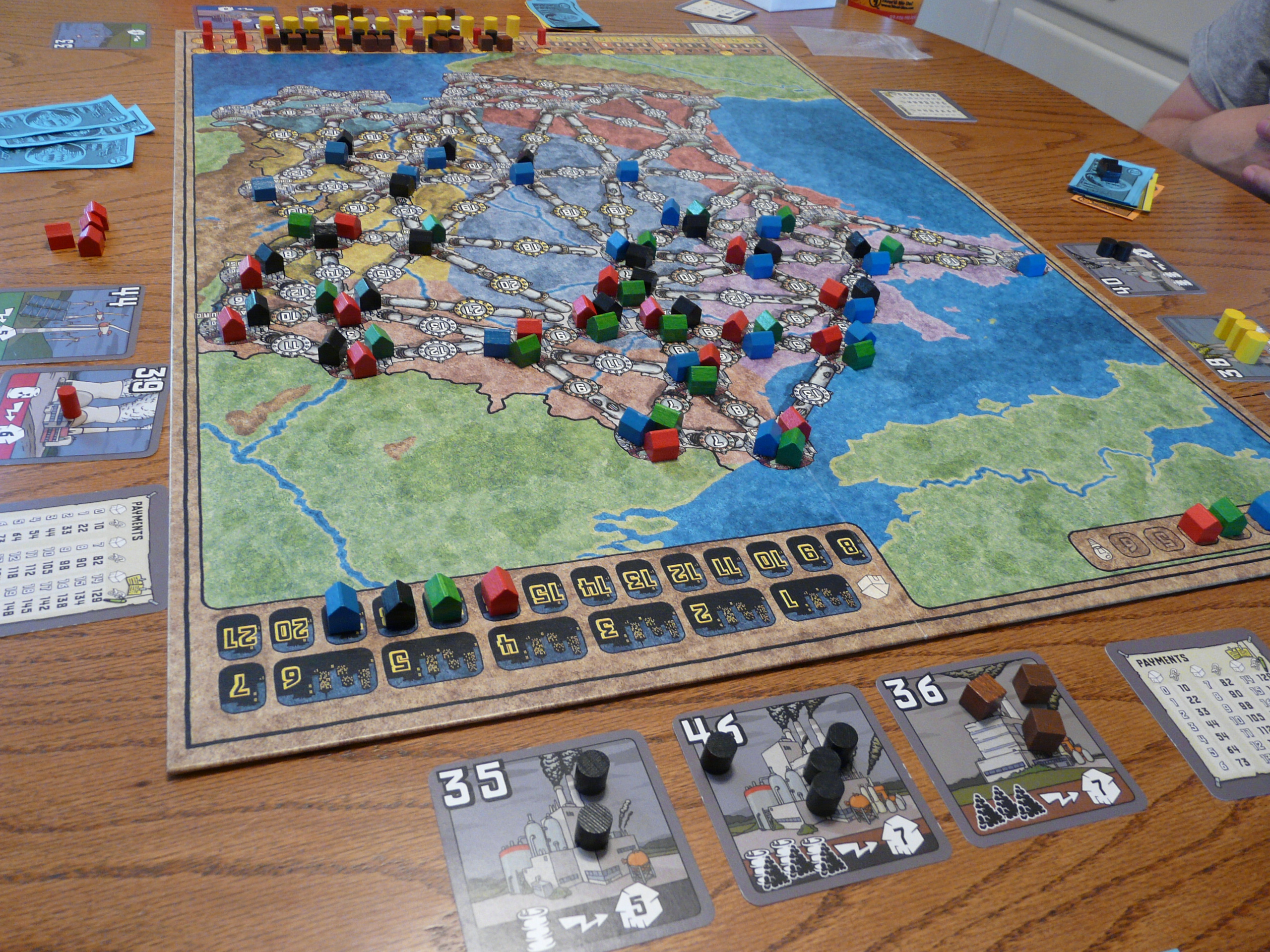Designer: Paul Dennen
My easy winner for best new-to-me game of the year, this game first hit the table in late 2017 and instantly became a mainstay of the group. Clank! is a basic deckbuilder but with a board game attached. You are a thief trying to creep into a dungeon, grab more treasure than everyone else and try to get out. The cards you play determine how far you move, what you can fight, and how much dragon attention you draw (see below).
Clank’s only flaw is that the game can effectively be short-circuited by a player grabbing the closest treasure and just heading out. Other than that, it’s a silly but deep experience that generates a lot of excitement around the table, especially as the game ends. I’m very excited to try the recent expansion pack (Clank! Sunken Adventures), and the followup (Clank! in! Space!)
Interesting Mechanic: Clank (the mechanic). When players play cards, some of them may have ‘clank’ as an attribute. If so, you end up putting your health cubes aside. Other events may cause the dragon to attack. When this happens, you put all of those cubes in a bag (with any cubes from previous attack events), and draw out a number based on how angry the dragon is. If your cube is drawn, you take a point of damage. Take too many, and you die.
The ‘Clank’ mechanic adds a real push-your-luck factor to the game, which adds real excitement and variance to the experience, especially near the end of the game. I’ve now had multiple games where everyone manages to escape the dungeon, and a couple games where literally everyone died, once with 3 people dying one room from the exit.
Other Favorite Thing: Mister Whiskers. You’ll know why when you see him.

(Photo Credit: Here)








Recent Comments